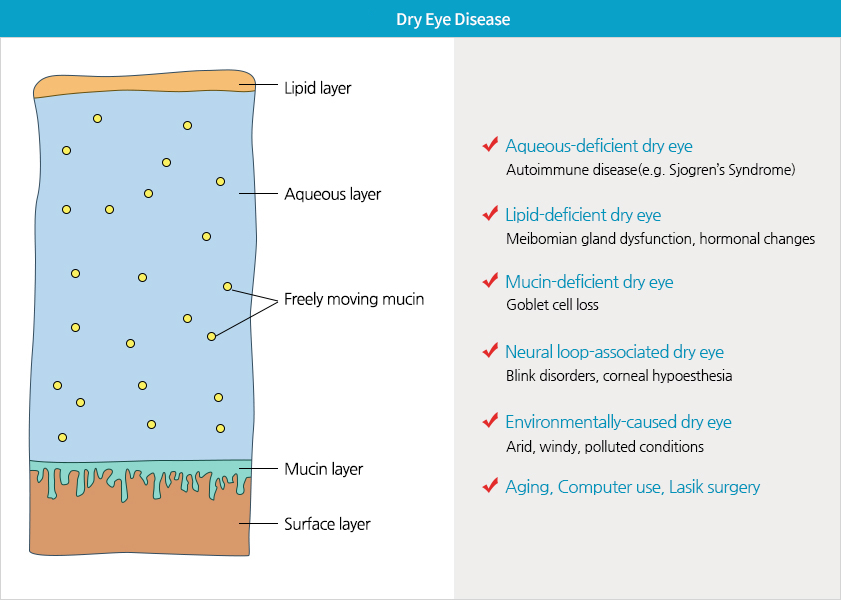Dry Eye Disease(DED)
Definition of Dry Eye Disease
- DED can be associated with inflammation of the surface of the eye, the lacrimal gland, or the conjunctiva. DED is also associated with any disease that alters the components of the tears, increases the surface of the eyes as in thyroid disease when the eye protrudes forward, or cosmetic surgery. There are numerous causes of DED, including medications, autoimmune and other disorders, eye surgeries, allergies, workplace environments, eye injuries, and aging. DED can be temporary or chronic and, if left untreated, can lead to pain, ulcers or scars on the cornea, and in some cases loss of vision.
Cause of Dry Eye Disease
- Dry eye disease is a multifactorial disease occurring on the tear membrane and ocular surface.

Symptoms of Dry Eye Disease
- The eyes feel painful, irritated as if a grain of sand is present, and sometimes sore and prickling. The eyes also fatigue easily, cannot open well, feel more comfortable when closed, and the symptoms worsen if the eyes are open. Especially, tears form in winter when the face contacts a cold wind outside, and people sometimes even have a headache. The exposed eye surface is inflamed.
A person with a dry eye disease will usually have one or many of these symptoms.


